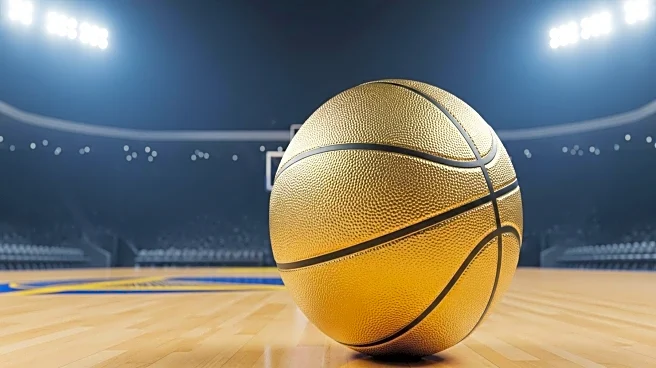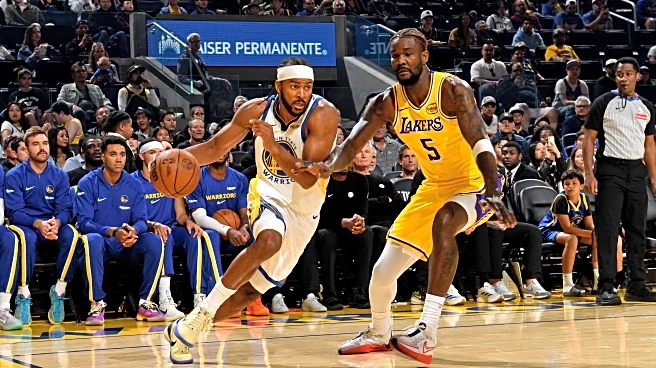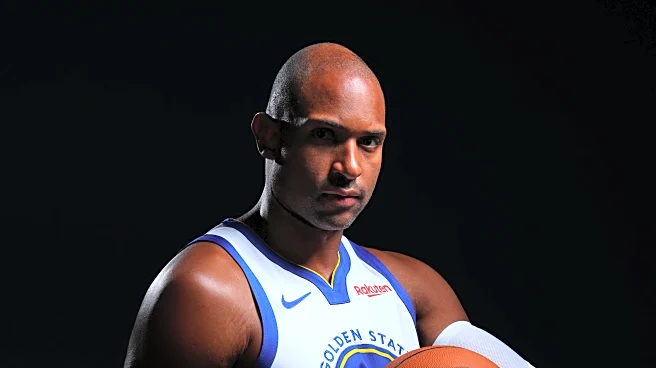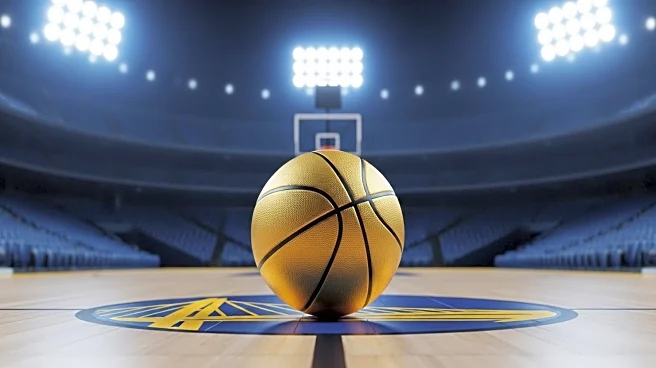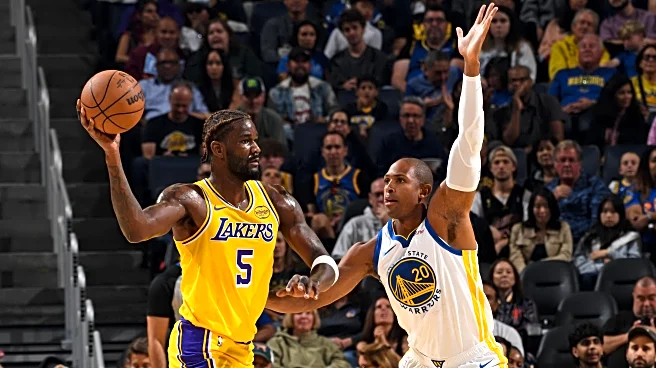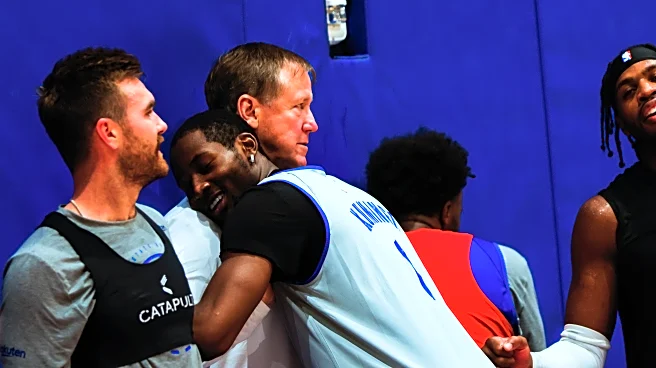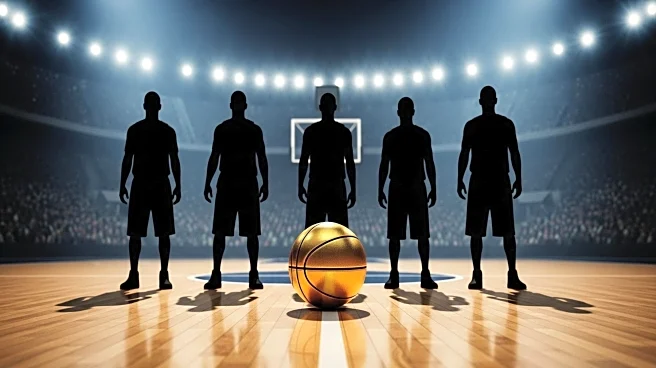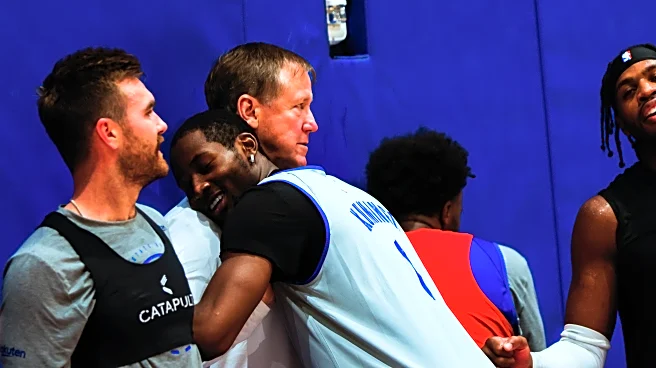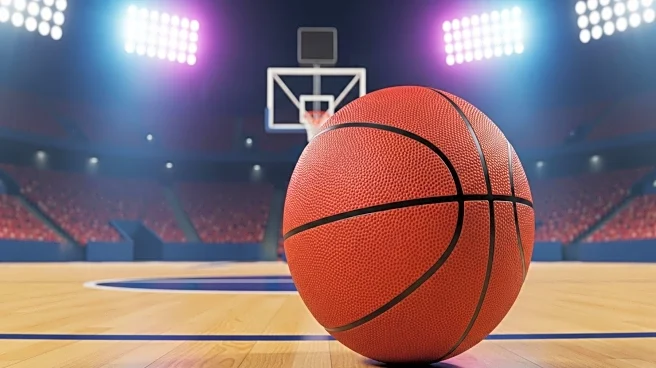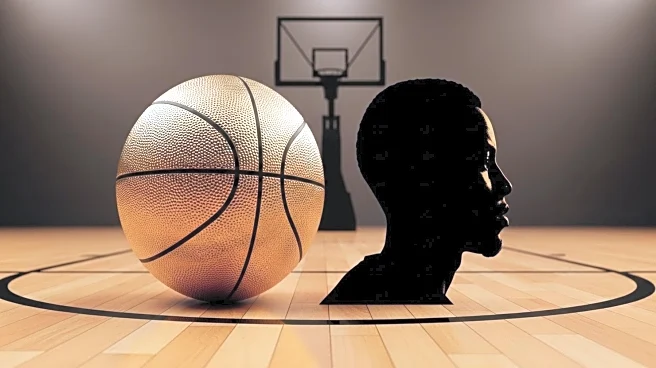A few days ago, I put out a call for a Golden State Warriors mailbag. Since then, the Dubs played their first preseason game, which went well. Not surprisingly, people had a lot of interest in the team
following a wild week in which they finally filled out their roster. So there were a lot of good questions to get to!
Well, I’d say it’s impossible to answer this until the season actually starts, but I will say that having Al Horford in the building should greatly benefit the Warriors pair of young bigs. Quinten Post in particular should stand to benefit from a fellow stretch five who, despite not possessing eye-popping athleticism, has become a force on both ends of the court for the better part of two decades. Even if the Warriors hadn’t signed Horford, I would have listed him as the player that Post should be studying and trying to emulate.
As for whether or not either player has implemented enough new elements into their game to earn bigger roles? Well, we’ll have to wait and see. There are likely less minutes to go around, as Horford will have a bigger role than Kevon Looney had a year ago. But if Post or Trayce Jackson-Davis can take a step forward defensively, there will be plenty of minutes for them.
I don’t think there’s any reason to think Jackson-Davis can play the four in the modern NBA. In order to play the four in 2025, you need to either be a playmaker (Draymond Green), and off-the-dribble scorer (Jonathan Kuminga), or a shooter (Horford). I also don’t think there’s any desire to push him down to the four. If they want a double big lineup, they can play Horford at the four next to TJD or Post. Draymond isn’t going anywhere, so even in the event of a Kuminga trade, they still have a full-time power forward.
Hard to say. Steve Kerr trusts Gui Santos, but at the same time, you have to imagine he’s at the very back of the depth chart right now. My guess is that he’ll fluctuate between being a DNP-CD and a 6-8 minutes a game spark plug when the season begins, and then he’ll have the chance to play himself into a bigger role … or fill in if someone gets injured.
I don’t think we’ll have a good idea about that until at least January. Who is this year’s Jimmy Butler III, disgruntled and seeking a new team? Has Kuminga been playing well or not? Are the Warriors in a position to add reinforcements or seek future assets? There are just too many unanswered questions currently.
My gut instinct is that it has to include the four potentially Hall of Fame-bound veterans: Butler, Green, Horford, and of course, Steph Curry. Who fills the fifth spot is a very difficult question though, and I do think it will vary with the matchup. Buddy Hield probably isn’t going to be the fifth choice most of the time, due to his lack of defense and at times shoot-from-the-hip decision-making. Brandin Podziemski probably does the most, but I lean towards the veteran steadiness and defensive excellence of De’Anthony Melton. Then again, I also think there’s a decent chance that Moses Moody takes a jump and becomes the clear answer here.
And then there’s the idea of a small-ball lineup. I included Horford above, but historically the Warriors best lineups have had Green at the five. I suspect, depending on the opponent, we’ll see that a fair amount down the stretch of games this year. A closing five of Curry, Podziemski, Butler, Green, and one of Moody/Hield/Melton/Gary Payton II would be chaotic in the best way.
I think the Warriors will unquestionably have some of the best depth in the NBA; maybe the best depth. What I’m curious to see is if Kerr starts this season the way he did last one, by playing a 12-man lineup with seemingly non-stop substitutions to stay fresh all through the game. I kind of doubt it, but it might be one of those situations where Kerr wants to keep everyone engaged and active so that each player is ready when their name is called, which it certainly will be given the age of the roster.
As for the second unit … there’s a lot of play-making available with Melton and Podziemski, and a lot of scoring available with Hield and Kuminga. I suspect we won’t have a true line change second unit … I think that one of Curry and Butler will always be on the court, and probably one of Green and Horford as well.
The answer to both questions is “yes.” Option deadlines can be extended as long as both parties agree to it. There was some talk that the Warriors and Chris Paul might do that last offseason, so the Warriors would have more time to explore moving Paul’s contract rather than just declining his option.
As for a new contract, teams are allowed to start negotiating with their own free agents as soon as the NBA Finals are concluded. They still can’t technically sign until July 6, but that doesn’t really matter — handshakes are all but binding at that point (technically no free agent can sign until a week after the start of the period, but that doesn’t actually have a negative impact).
So, here’s a fun little piece of CBA minutiae: voluntary options (which is to say, not the mandated rookie-scale options) have a negotiable window in which they can be exercised. When the window starts is not usually made public; just the deadline (in Kuminga’s case, the June 29 deadline is, as is standard, the latest date that the window can go to). So in theory it could be that the Warriors and Kuminga negotiated to have the option window open all season, but my guess is that it’s the standard window of the end of the season through the end of June.
As for how it would potentially impact Bird Rights, well … it all gets very convoluted and everyone seems a little confused when it comes to unconventional scenarios. So given the unlikelihood of a midseason option exercise, it’s a little hard to find any clarity on what would be an unprecedented situation. So all I can say is that the NBA is very good at making sure loopholes can’t be taken advantage of.
It’s something of a moot point though, because, even without Bird Rights, if Kuminga is traded this year and the team exercises his option for next year, then they’ll have Early Bird Rights when he reaches free agency in the summer of 2027. Early Bird Rights allow you to sign for 175% of your prior year’s salary, which, in this hypothetical scenario, would be more than $42.5 million annually.
I hope Kuminga plays himself into a max contract, but it seems unlikely; and that’s really the only scenario where he would need full Bird Rights instead of Early Bird Rights.
We can safely state that, when healthy, Curry, Butler, and Green are 60% of the starting five. I certainly lean towards Horford starting at the five. He’s too good, too experienced, and too trusted. Especially given some of the issues in recent campaigns, I think Kerr will prioritize coming out of the gates firing. And I think it’s already abundantly clear that he sees Horford — a champion, All-Star, and All-Defense player with 18 years of experience, who plays the game in an exceedingly Warriors way — as an extension of the core three.
I still lean towards Melton starting once he’s healthy, because Kerr really loved the Curry/Melton starting backcourt for the whole two games they played last season before Melton suffered a torn ACL. But I think Moody and Podziemski will have a great camp battle for the right to start while Melton continues to rehab … and to perhaps run with the job.
As for subs, I do think Kuminga will be the first man off the bench, possibly with Hield. Kerr (like most coaches) has historically liked bringing in a burst of offense as the first sub, and especially given the collective age of the starting lineup, I think it would be a wise change of pace if the Warriors countered their slow, methodical play by bringing in Kuminga to show off his athleticism.
Great question. There are a few potential reasons, but the biggest one is likely this: second-round contracts are usually negotiated before the draft. Ever since signing rookies to two-way contracts became a thing, players and agents started to negotiate this process with teams before the draft, so that players did not get screwed over (for example, a first-round pick who falls to the 31st pick would not be happy being forced onto a much-cheaper two-way deal).
The example that Warriors fans might remember is that of Jackson-Davis, who “fell” to the team at No. 57. Plenty of teams were interested in TJD in the 30s and 40s, but his agent told them he had no interest in being drafted by anyone who would stick him on a two-way contract, and instead let him stay on the board until a team (the Warriors) that was prepared to give him a guaranteed contract was ready to take him. So, in all likelihood, I assume that Richard getting a guaranteed contract and all the many perks that come with it was discussed before the team drafted him, and they weren’t going to renege on that.
Sometimes you’ve got to wait to see how the season plays out! In the era of the play-in tournament, where two-thirds of the league gets to play in the postseason, it’s nearly impossible to predict what teams will be sellers. So often it comes down to which team suffers an unexpected injury that tanks their season.
I’m writing this before listening to Kerr’s appearance on Tim Kawakami’s podcast, so it’s entirely possible that he shed some light there. It could be a few things. Kerr would never say this publicly, but I suspect there’s a chance that Joe Lacob is playing hardball with him. The extension that Kerr is currently finishing up made him the most handsomely-compensated coach in NBA history, and it’s quite likely that Lacob wants to see how the Dubs do this year before deciding whether to keep cutting checks that size. It’s still a “what have you done for me lately” league, even for all-time greats.
It could be that Kerr is in the LeBron James phase of his coaching career, and wants to take things year by year, unsure how much longer he wants to do this. It could be that he’s exhausted after so many years coaching a wildly popular team with some strong personalities and might be ready for a new challenge soon. It could be him being a company man, aware that the team is going to have to choose a new direction in a post-Steph world, and wanting to give them freedom to get started on that early should they choose.
If I had to bet on one reason though, it would be this: Curry and Green’s contracts will expire next season, and there’s a chance that’s the end of that. I think Kerr will stay with the Warriors for the entirety of Curry’s career, but without knowing what is in Steph’s future, that would mean signing just a one-year extension right now, which is an odd thing to do. I suspect that everyone is on the same page about Kerr coaching next season, and he’ll just wait until the season is up to get a better read on what Curry does. If Curry goes into the final year of his contract without an extension, I’m guessing Kerr will re-sign on a one-year deal. If Curry extends so he has three more years, don’t be surprised if Kerr does the same.
I’ll have an article on this soon, but if you’re in the Warriors market, you can now watch games that are televised on NBC Sports Bay Area with a Peacock subscription. If you’re out of market, you’ll need to get NBA League Pass for those games. Unfortunately, with the massive amount of nationally-televised games the Dubs play, you’ll also need some sort of TV subscription — Sling, Fubo, YouTube TV, etc., — to catch all the games.
I answered a similar question at the start of the article, so I’ll just add this: if Kuminga is in Kerr’s doghouse, trading him is going to be very difficult. Not many teams are going to want to get rid of $20+ million in salary (presumably interesting salary, or the Warriors wouldn’t be interested) for a player who hasn’t been getting any shine during the season?
I know there’s a lot of talk of trading Kuminga at the deadline, and I’m sure the Warriors are hoping that some disgruntled star becomes available, but I think it’s far more likely they wait until the summer and then sign-and-trade him after declining his option.
Thanks for the questions, everyone!

